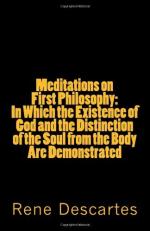Sect. XXXIII. Of Veins and Arteries.
There are in man’s body numberless branches of blood-vessels. Some of them carry the blood from the centre to the extreme parts, and are called arteries. Through those various vessels runs the blood, a liquor soft and oily, and by this oiliness proper to retain the most subtle spirits, just as the most subtle and spirituous essences are preserved in gummy bodies. This blood moistens the flesh, as springs and rivers water the earth; and after it has filtrated in the flesh, it returns to its source, more slowly, and less full of spirits: but it renews, and is again subtilised in that source, in order to circulate without ceasing.
Sect. XXXIV. Of the Bones, and their Jointing.
Do you consider that excellent order and proportion of the limbs? The legs and thighs are great bones jointed one with another, and knit together by tendons. They are two sorts of pillars, equal and regular, erected to support the whole fabric. But those pillars fold; and the rotula of the knee is a bone of a circular figure, which is placed on purpose on the joint, in order to fill it up, and preserve it, when the bones fold, for the bending of the knee. Each column or pillar has its pedestal, which is composed of various inlaid parts, so well jointed together, that they can either bend, or keep stiff, as occasion requires. The pedestal, I mean the foot, turns, at a man’s pleasure, under the pillar. In this foot we find nothing but nerves, tendons, and little bones closely knit, that this part may, at once, be either more supple or more firm, according to various occasions. Even the toes, with their articles and nails, serve to feel the ground a man walks on, to lean and stand with more dexterity and nimbleness, the better to preserve the equilibrium of the body, to rise, or to stoop. The two feet stretch forward, to keep the body from falling that way, when it stoops or bends. The two pillars are jointed together at the top, to bear up the rest of the body, but are still divided there in such a manner, that that joint affords man the conveniency of resting himself, by sitting on the two biggest muscles of the body.




